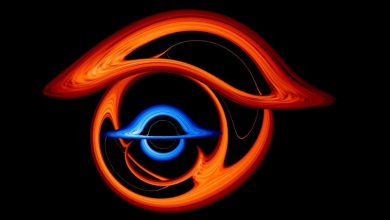Astronomers observed a black hole 650 million light-years away rip apart a star and, months later, emit two powerful flares.

Astronomers spot a rogue black hole devouring a star and emitting two massive flares months later
Click Here to Add Gadgets360 As A Trusted Source

In mid-October 2025, the astronomers announced that they had observed something truly unheard of: a giant black hole approximately 650 million light-years distant, tearing a star apart and almost six months later, emitting two sudden energetic flares. This is an uncommon tidal disruption phenomenon (TDE), which was identified in 2024 by the Zwicky Transient Facility at the Palomar Observatory in California, that overturns the expectations regarding the locations and the modes of stellar consumption by the black holes.
Discovery and Observations
According to the research, in late 2024, astronomers first spotted the flare with the Zwicky Transient Facility (ZTF) on the Samuel Oschin Telescope at Palomar Observatory in California. An international team led by UC Berkeley astrophysicists Itai Sfaradi and Raffaella Margutti then monitored the event.
They used radio telescopes around the world — including New Mexico’s Very Large Array and Chile’s ALMA — to track the source. These observations revealed two delayed radio outbursts following the star’s destruction.
Explanation and Significance
This was not the usual thing to happen, and it was approximately 2,600 light-years out of the centre of its galaxy. There have only been three off-centre TDEs that have been observed. When this happens, the tidal forces of a black hole lengthen and tear the star apart, releasing a massive amount of energy. The two flares that are delayed in radio are indications of strong jets.
According to Sfaradi, the outcome alters how people conceive black holes. The group believes the offender to be an intermediate-mass rogue black hole, which may have been expelled in a galaxy merger in the past.








